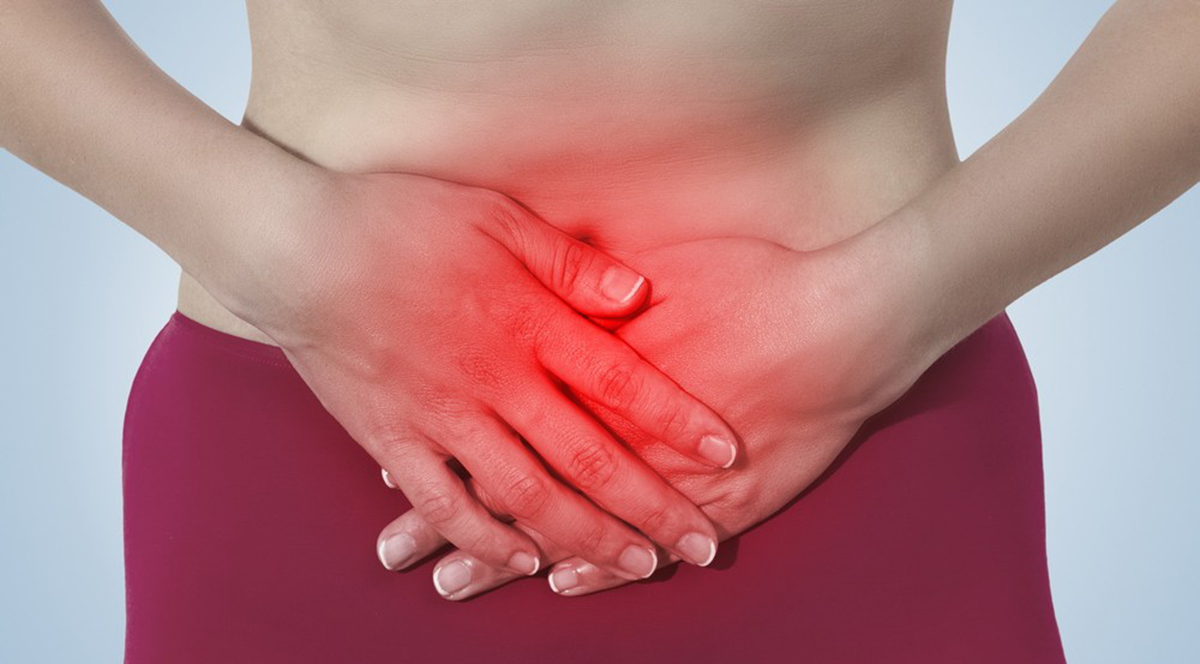Peritoneum is the smooth and silky membrane that lines the inner walls of the abdomen as well as the abdominal organs. Peritonitis is an infection of this membrane. Peritonitis may be a bacterial or fungal infection, and usually occurs due to a perforation (rupture) in the abdomen.

For a surgeon, peritonitis is one of the most feared complications. Timely management has shown good outcomes, but anyway, the surgeons have to cut open the abdomen to clean the whole area. Even a minor mistake can lead to death of the patient. It is also known to be dangerous because peritonitis, after a certain period of time, spreads infection into the blood stream causing sepsis. Once the infection has reached blood, it causes multi-system failure which is hard to manage. Studies have shown that patients who develop sepsis are less likely to recover.
What are the Types of Peritonitis?
Peritonitis has two main types, namely primary (spontaneous) peritonitis and secondary peritonitis. Both these types can be fatal.
What are the Causes of Peritonitis?
Peritonitis is divided into 2 categories based on its causes.
1. Primary (spontaneous) Peritonitis
This infection, as the name suggests, starts within the peritoneum. Causes for the development of this type of infection include:
- Kidney Failure during Peritoneal Dialysis
This is a procedure in which a catheter is implanted into the peritoneum to filter blood of wastes that accumulate due to kidney failure. Accidental contamination of the peritoneum due to an infected catheter is likely to cause primary peritonitis.
- Cirrhosis (Liver Disease)
Such a disease causes the accumulation of abdominal fluids that may become infected. Excessive use of alcohol and chronic viral hepatitis (B or C) can increase the chances of developing liver cirrhosis.
2. Secondary Peritonitis
This sort of infection develops after an injury or infection in the abdominal cavity, due to which infectious organisms spread into the peritoneum. It can also infect premature babies in certain cases. Causes include:
- Pancreatitis - bile or certain chemicals secreted by the pancreas seep out into the lining of the abdominal cavity.
- Injured or ruptured appendix
- Perforation of stomach, intestine or gallbladder
- Diverticulum or Diverticulitis
- Stomach ulcer
- Crohn’s disease
- Pelvic Inflammatory Disease (PID)
- Complications form abdominal surgery
- Abdominal trauma (gunshot wound, knife injury, etc)
Non-infectious Peritonitis
Peritonitis can also be caused by certain irritants or chemicals, such as blood, bile, and foreign substances that may gain entry into the abdomen.
It is also found to cause peritonitis, but very rare.
See Also: Persistent pain in the upper abdomen: Dyspepsia (Indigestion) Symptoms and Treatment
Who is at Risk of Developing Peritonitis?
Certain factors that may increase the risks of peritonitis are:
- Prior infection – Chances of peritonitis is higher in those who have had a prior infection.
- Peritoneal Dialysis – Chances of developing a consequent infection are higher.
- Immuno-compromised Patients – patients with weak immune system are at a greater risk of developing peritonitis. Drug abusers and patients suffering from AIDS are good examples of immuno-compromised patients.
- Other conditions – Cirrhosis, diverticulitis, appendicitis, Crohn’s disease, pancreatitis, stomach ulcers.
Peritonitis - Symptoms, Diagnosis, Treatment
Peritonitis is not very hard to diagnose because of its typical presenting symptoms.

Initial symptoms usually include:
- Loss of appetite
- Nausea
- Slight abdominal pain that gradually worsens
Subsequent symptoms include:
- Vomiting
- Fever accompanied with chills
- Shortness of breath
- Problems with passing gas and stool
- Low urine output
- Abdominal tenderness
- Abdominal bloating
- Excessive fatigue
- Excessive thirst
- Elevated heart rate
In case of peritoneal dialysis, the following symptoms may also appear:
- Fibrin (seen as white strands) in the dialysis fluid
- Unclear dialysis fluid
How is Peritonitis Diagnosed?
Diagnosing peritonitis early is very important, since the complications that may develop can prove to be life-threatening.
- Medical History – questions about signs and symptoms, allergies, medications you may be taking, prior abdominal problems or surgeries.
- Physical Examination – check for abdominal tenderness or stiffness, patients usually curl up or refuse to be examined in that area.
- Blood tests – check for elevated white blood count, blood culture to check for bacterial infection.
- Analysis of Peritoneal Fluid (Paracentesis) – sample of peritoneal fluid drawn via a needle for examination of white blood count or presence of bacteria.
- Analysis of Peritoneal Dialysis Fluid – unclear, cloudy fluid is indicative of infection.
- Imaging Tests – X-rays (check for perforations), ultrasound, CT Scan.
How is Peritonitis Treated?
The following treatment options are available to treat peritonitis once admitted to the hospital:
- Administration of intravenous (IV) antibiotics and antifungal medications.
- Secondary supportive treatments in case of organ failure due to sepsis from the infection. These may include IV fluids, drugs, maintenance of blood pressure and nutritional supplements.
- For the treatment of peritonitis due to peritoneal dialysis, medications are injected directly into the peritoneal tissue. Some other form of dialysis, such as haemodialysis, is administered as an alternative.
- Often emergency surgery may be required, especially if the underlying cause is appendicitis, diverticulitis or stomach ulcer. Infected damaged tissue or any abscess will be surgically removed.
How Can Peritonitis be Prevented?
However, the following measures may help lower the risk of such an infection:
- Report any abdominal pain or discomfort that you may develop.
- Maintain proper sterile conditions.
- Maintaining hygiene. Before handling the catheter, wash your hands thoroughly, particularly the areas between the fingers and underneath the fingernails.
- Wearing a mask to cover the mouth.
- In case of an infection, daily apply an antibiotic cream to the site where the catheter has been inserted.
- Report any possible contamination of the dialysis fluid or the catheter site. A course of antibiotics may help prevent an infection from developing.
See Also: Baby Colic (Abdominal Pain in Infants) - Symptoms and Treatment
What are the Complications of Peritonitis?
This may lead to:
- Bacteremia (infection of bloodstream)
- Sepsis (infection within the body). If this condition progresses, it can be fatal and may cause shock or organ failure.
- Photo by shutterstock.com
- Photo courtesy of Erica Firment by Flickr : www.flickr.com/photos/librarianavengers/2888783484
- www.webmd.com/digestive-disorders/peritonitis-symptoms-causes-treatments?page=2
- http://www.mayoclinic.org/diseases-conditions/peritonitis/basics/complications/con-20032165

